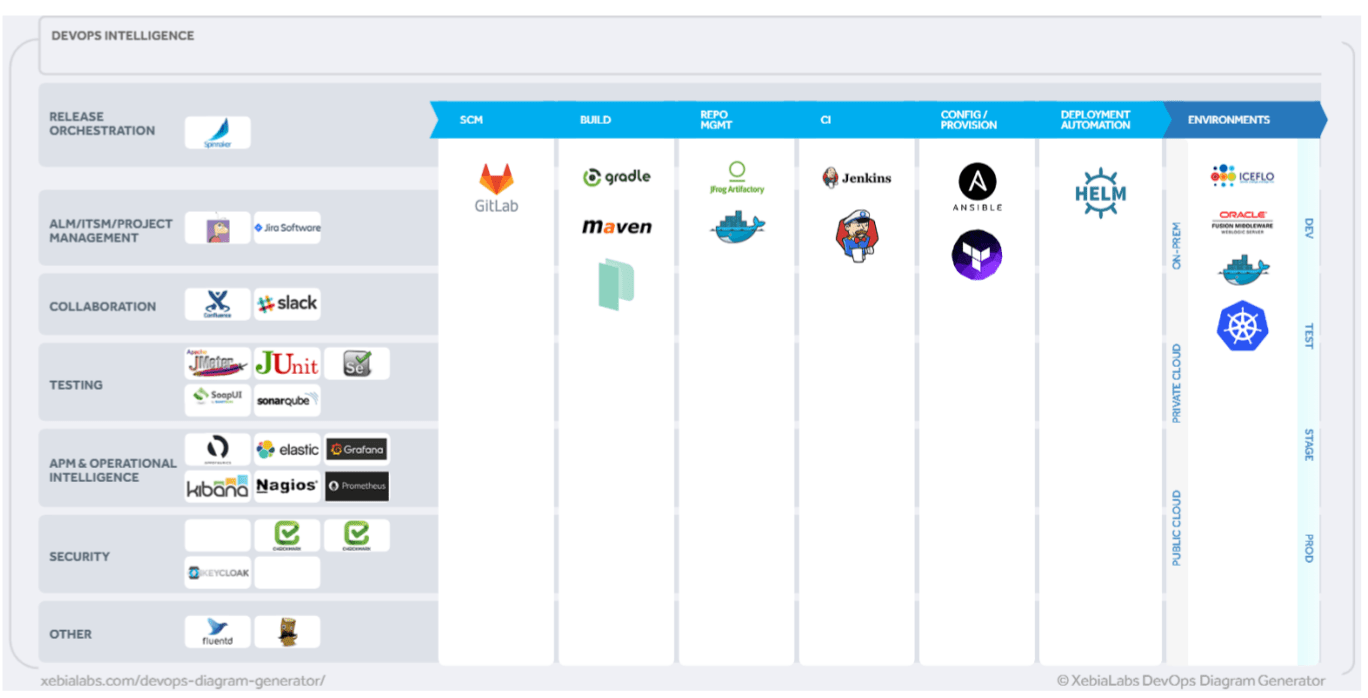! I work for Oracle and the views expressed in this article are my own.
In this article I intend to elaborate some very practical enterprise problems that arise during their containerization journey from an infrastructure standpoint and also encourage enterprise users to examine On-Premise Kubernetes Managed solutions with a healthy dose of cynicism
For the Impatient
Please ignore this article if you have a Software Defined Data Center where you have implemented paradigms like
- Software Defined Infrastructure
Storage, Compute, LBs, Routers, Firewall
- Infrastructure as Code
- Immutable / Idempotent Configurations
- Git as the source of truth for everything
Unless you’ve been living under a rock, you have read/experienced how container technology is re-defining the enterprise IT.
To simplify it
Docker/LxC/Kata/Rkt = VMs
Kuberneres/Mesos = vSphere/vCenter

Summary of points discussed further
- It is simply easier to run your cloud native workloads on the public cloud, if you can.
- Managed solutions for Kubernetes on-premises will not necessarily make life easier for you. They are not magic beans.
- Yes, they make provisioning and some parts of the Ops easier but is that really the biggest issue ?
- Sometimes with these managed solutions you will need to cut your feet to fit the shoe.
- It does not make sense to discuss a Kubernetes solution on-premises in isolation. Software defined infrastructure is key to your success.
- Keep an eye out for the _licensing metrics on a per-pod/per-container based model _which almost sounds like a penalty for scaling.
- Beware of Kitchen sink solutions !!

Read on if your enterprise Data Center/ IT Landscape has one/many the following characteristics.
The one word that sums up your IT Landscape is “Heterogenous”
Data Center/ Networking:
- Your Data Center has implemented
DMZ/ Non-DMZ
Trusted and Untrusted Zones
Internet - Intranet
UAT/Dev | Prod | DR
- Core Switches(L3) and Access Switches(L2) tie your data center together
- WAF, perimeter firewall, anti DDOS mostly from different vendors
- a/many dedicated hardware load-balancer(s)/ application delivery controller(s)
Infrastructure :
- You have SAN Switches connecting multiple storage arrays from Hitachi/ Dell-EMC
- You have ESXi/ AIX / AHV/ KVM/ OVMs/ Hyper-V in your hypervisor landscape
- You have both Intel and RISC Compute
Application/DB Landscape :
- Your Database workloads are mostly Oracle, MSSQL, DB2, MySQL
- The majority of your app layer and middleware runs Weblogic, WebSphere, JBOSS, Tomcat.
- You only load balance your Web Tier
- Web Tier is mostly a reverse proxy
App / Infra Modernization Journey :
You also have
- Recently invested in
HCI ( Hyper Converged Infrastructure )
PaaS
SaaS
- Some of your net new workloads are demanding a
Container Native Storage
Cloud native environment within your data center
- You have started working on pivoting
Service Oriented Architecture
Microservices
APIs
While you have begun this journey, the following questions still remain
- I see great potential for these systems in UAT/Sandbox but you are not quite sure how they will integrate to your DC infra in production ?
- How can I leverage/re-purpose my On-Prem ( Storage, Networking, Compute) investments for these cloud native architectures
- Not very confident about the robustness in security/isolation primitives for these paradigms
It is simply easier to run Kubernetes on the Cloud
- Kubernetes on the public cloud is the easiest to implement where the cloud provider’s storage, network and compute is tightly integrated with Kubernetes/ Docker constructs.
-
Kubernetes Managed Service from the cloud provider is not vendor-lock in because Workload portability is as simple as change in a line or two of code in your Kubernetes Manifest File . Eg.
StorageClass: 'ebs' --> StorageClass: 'oci' Allows you to provision Oracle (OCI) Block Storage instead of Elastic Block Storage (AWS)
If you have cloud-native workloads or plan to containerize your workloads, do yourself a favour, run them on the public cloud
As an enterprise, if you cannot run these workloads on the cloud and you have undertaken a journey to modernize them on-premise read-on
Myopic Solutions are an issue
What Enterprise requirements usually overlooked by the one-solution fits all approach by vendors ?
- Assuming you have
- Dev / UAT / PROD Environments
- Web / App Tier
- And 3 Applications due for containerization
I have the requirement that they run on separate Kubernetes Clusters
- Would I purchase (3x2x3) 12 HCI Boxes with separate licenses for a managed Kubernetes Service and PaaS ?
- If yes, can I manage them using a single console ?
If I had to bypass creation and management of those many clusters, the solution provided by many managed vendors is to invest in a Data Center Wide SDN Solution.
The notion that you would need to buy expensive HCI and SDN within your data centers to realize the benefits of containers to start with a small subset is the equivalent of needing
Buying a hand-grenade to kill houseflies.
Selective Outrage on Non-Concerns
- _Provisioning/Orchestration_ isn’t the hard part when it comes to building cloud-native architectures on-premises.
- In Enterprises Co-existence with containerized monoliths or legacy is a harder and a far more important problem to solve
Adding Fuel to Fire
- My Web and App Tier will be containerized , but my database isn’t ready
- Web and App Tier cannot/should not run in the same cluster
- I want Physical and Logical Isolation between the two
- I want my Web Tier Kubernetes Cluster to work with my F5/ Citrix Hardware load balancers
Node Ports are convenient, which is a major problem
- Node Ports are a very convenient way to expose the service externally acorss the cluster, where I don’t want my service to be tied to an IP.
- I do not want to open a Cluster-wide NodePort (1 Port per VM) to expose an Application Service to another Tier (Eg. Web Tier )
- This problem gets worse as the size of the cluster gets bigger.
The number of ports you would need to open in your firewall grows multifold with
- Number of apps per cluster
- Expose more than one service externally per app
Sweeping Generalizations
DIY Kubernetes is hard, Managed Kubernetes will fix all my problems - Wrong Approach !
- Some managed Kubernetes Solutions will not allow you to due to their opinionated nature
- Choose Container Networking / Storage
- Load Balancing
- Leverage existing investments in Compute/Networking/Storage
- While it is true that Software Defined Everything with HCI ( Compute/ Network /Storage /Data-Center ) is great, it really depends on the scale of your on-premise, container-native requirements to be able to quantify value
How would I build such a stack ?
An example of how I could build a robust cloud-native stack without significant engineering effort using a service provider within your data center
- IAC ( Infrastructure as Code) - Terraform
- Configuration Management - Ansible
- Re-usable Machine Images/ Build - Packer
- Containerization / Orchestration - Docker-EE + Kubernetes
- Software Container Native Storage - Ceph
- Software Defined Networking with Security primitives - Calico
- Software Defined Kubernetes Load Balancer - MetalLB
- CI/CD + Release management - Jenkins-X + Spinnaker
- Container Runtime - Docker-EE
- Image Repository - Artifactory-EE
- STAST and DAST - Checkmarx /AquaSecurity/Keycloak
- Infra Monitoring, Alerting and Analytics - Prometheus + Grafana
- APM - Your existing APM vendor
All of these tools are Cloud-Agnostic / Truly re-usable in a multi-cloud, hybrid cloud environment. It is a combination of CNCF, Open-source, Enterprise Editions of upstream open sourced tools.

Q1. Will containers work for me ?
Yes, they definitely are and can bring in significant benefits. The benefits snowball exponentially with scale
Q2. Will containers work for me in my data center on-premises ?
Yes, they will, but there are some hurdles to overcome. Read On
Q3. What are my priorities when it comes to on-prem cloud native journey ?
-
In the short term a software service provider/partner with your existing infrastructure and a flexible toolchain engineered to suit your needs will work better than a one-solution fits all approach.
-
In the long term, data center modernization with a robust SDN that supports container primitives and software defined everything is the way forward.

 The search for On Premises Container Native Storage
The search for On Premises Container Native Storage